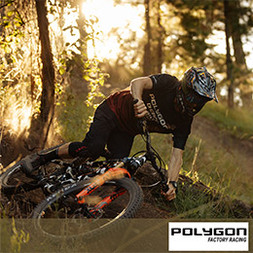27.5 vs 29 Mountain Bike Wheels: An In-depth Comparison
Deciding between 27.5-inch and 29-inch mountain bike wheels? Our article breaks down the advantages of each to help you make an informed choice based on your riding style and trail preferences. Deciding between 27.5-inch and 29-inch mountain bike wheels? Our article breaks down the advantages of each to help you make an informed choice based on your riding style and trail preferences.
Picking the correct wheel size for your mountain bike is important. It can impact the type of rider you become, not just how your bike looks.
Two main mountain bike wheel sizes are 27.5 inch wheels and 29 inch wheels. Each size has loyal fans for good reasons. This discussion delves deep into both, assessing their impact on essential aspects such as climbing, descending, and jumping.
Whether you're new or experienced, knowing the size of your mountain bike wheels is important for doing well on trails. Let's explore mountain bike wheels with personal experiences and expert insights for an enlightening journey into this world.
Introduction: Understanding Wheel Size Differences
The primary distinction between 27.5-inch (also known as 650B) and 29-inch (or 29er) wheels lies in their diameter. A small difference in a bike's design can greatly affect how it handles and performs on various surfaces. It also plays a role in a mountain biker's comfort and efficiency.
Smaller wheels are quicker to speed up and steer, while larger wheels provide more stability and can handle obstacles better. Deciding between the two choices is not easy, as things like rider height, type of riding, and personal likes all matter.
Performance Comparison: Climbing, Descending, and Jumping
Most climbers prefer 29-inch wheels for better efficiency, traction, and ability to roll over obstacles easily. Their larger contact area with the ground reduces the energy loss, thereby making climbs less taxing.
However, 27.5-inch wheels are not far behind, particularly praised for their agility and responsive acceleration on steeper climbs. Descending is where 29ers excel, offering more stability and confidence at faster speeds. They also offer improved handling over rough mountain bike trails.
Smaller 27.5 wheels make it easier to maneuver and jump, especially helpful for tricky downhill sections. Dirt jumping and doing tricks is easier on a 27.5-inch wheel size bike because it is lighter.
This also makes 27.5 bikes easier to control while in the air. That said, skilled riders can also leverage the momentum of 29-inch wheels for smoother landings.
Personal Experience with 27.5-inch and 29-inch Wheels
29-inch wheels make long rides less rough on the body as they smooth out the trails. They offer a sense of invincibility when rolling over roots and rocks. 27.5-inch wheels are better for a fun and lively ride, allowing for more air and quick turns.
It's fascinating how the choice of wheel size can influence riding style and enjoyment. We find that 29-inch wheels are good for long rides and new trails, and 27.5-inch wheels are good for bike parks and familiar descents.
The Role of Weight in Wheel Size Selection
Weight is important for bike performance. Lighter wheels make acceleration faster and climbing easier. In the past, cyclists recognized 27.5-inch wheels for their weight advantage.
However, with advancements in technology, 29-inch wheels have significantly closed the gap. Now, the weight difference is often negligible, especially in higher-end models.
The choice may depend on the type of riding you prefer and the features you want, rather than weight. Consider what type of riding you enjoy and what specific features are important to you. Weight may not be the most important factor in your decision.
Testing Criteria and Scoring for Wheel Performance
To objectively assess wheel performance, testing criteria can include metrics like acceleration speed, handling and maneuverability on technical trails, climbing efficiency, and airborne control. Testers often score bikes on these criteria in controlled environments to ensure comparability. However, it’s essential to factor in personal comfort and preference, as these qualitative aspects heavily influence overall satisfaction.
Final Thoughts: Choosing the Right Wheel Size for You
Ultimately, the choice between a 27.5-inch and a 29-inch wheel depends on your preferences, riding style, and typical terrain. Consider what feels most comfortable for you and how each size may impact your performance. Think about the type of trails you usually ride on and how the wheel size may affect your experience.
If you prioritize agility, acceleration, and the thrill of jumping, a 27.5-inch wheel might serve you well. If you prefer stability, efficiency, and comfort on long distances or rough terrain, a 29-inch wheel may be best for you.
The best advice is to test ride both sizes if possible. Experiencing how each wheel size feels under your control is invaluable in making your final decision.
Leave a comment
- Training Tips for a Beginner Cyclist
- Industry Reviews
- Mountain Bikes Buyer's Guide
- Polygon Siskiu T8 vs Collosus N9
- Superior XP919 Review: An Affordable Cross Country Marvel
- Mountain Bikes vs. Road Bikes: Which Is Safer for Your Cycling Adventures?
- Drop bar Buyer's Guide
- Are Electric Bikes Safe? Unpacking the Truth for New Riders
- Commuter Bike Guide
- Essential Bike Accessories for Every Cyclist
- Ultimate Guide to Buying Cycling Gear Online
- Is a Mountain Bike Good for Commuter Use? Exploring Versatility and Performance
- Is It Worth Buying an Ebike? Weighing the Pros
- Pinned With Polygon | The gang goes to Crankworx
- EWS #5: Burkville
- Sustainable Strategies
- Worth-it Blogs EP#3: Budget Hardtail Upgrades
- Worth-it Blogs EP#2: Hardtail Hitters
- The Bicycles Online's Company Fitness Challenge
- Bikes Online Does Sea Otter
- Choosing the Right Mountain Bike: Polygon Siskiu T6 vs. T9
- The Amazing Do-It-All Trail Bike: Polygon Siskiu T8 Review
- Polygon Siskiu D7 vs T7: Finding the Best Bike
- Guide to Polygon Siskiu T Mountain Bikes
- Upgrading Your Mountain Bike Suspension: A Guide to Fork Selection
- Bikepacking 101
- Fox vs. Rock Shox: A Comprehensive Comparison of Mountain Bike Suspension Giants
- 27.5 vs 29 Mountain Bike Wheels: An In-depth Comparison
- The Ultimate Guide to Choosing the Right Gravel Bike
 USA
USA AUS
AUS









